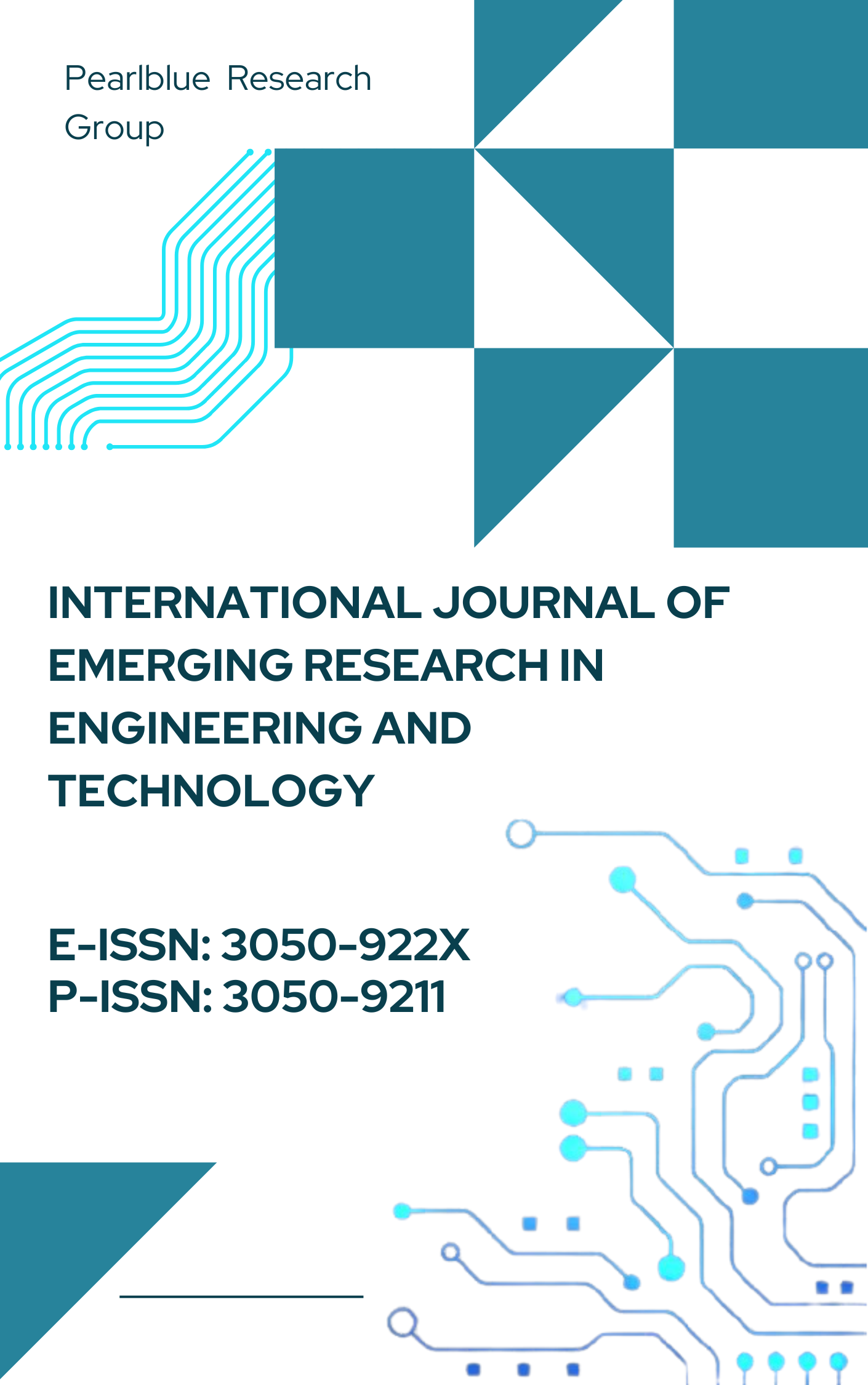Dynamic Frameworks for Enhancing Security in Digital Payment Systems
DOI:
https://doi.org/10.63282/3050-922X.IJERET-V2I2P104Keywords:
Digital Payment Security, Human-Centered Authentication, Zero Trust Architecture, Inclusive Design, Quantum Readiness, Role-Based Access Control, Regulatory Compliance, Insider Threat Mitigation, Scalable Payment SystemsAbstract
The rapid growth of digital payment technologies has revolutionized global commerce, bringing remarkable benefits but also creating new challenges in security, usability, and regulatory compliance. This study goes beyond traditional security frameworks by addressing real-world gaps in implementation, inclusive design, readiness for quantum threats, and adapting to evolving policies. Taking a comprehensive approach, the research highlights the often-overlooked disconnect between theoretical security models and their practical deployment, particularly in markets facing infrastructure limitations. It underscores the need for human-centered authentication systems, investigates strategies to reduce insider threats, and introduces proactive security measures such as role-based access controls and Zero Trust Architecture. The paper also provides practical strategies for expanding secure digital payment systems at scale without sacrificing usability or compliance, and with an eye toward staying ahead of future technological risks. These insights are intended to help software developers, financial institutions, and policymakers create resilient, inclusive, and regulation-ready payment systems for the decade ahead
References
[1] Shannon, C. E. (1949). Communication theory of secrecy systems. Bell System Technical Journal, 28, 656–715.
[2] Diffie, W., & Hellman, M. E. (1976). New directions in cryptography. IEEE Transactions on Information Theory, 22(6), 644–654.
[3] Rivest, R. L., Shamir, A., & Adleman, L. (1978). A method for obtaining digital signatures and public-key cryptosystems. Communications of the ACM, 21(2), 120–126.
[4] Shamir, A. (1979). How to share a secret. Communications of the ACM, 22(11), 612–613.
[5] Chaum, D. (1983). Blind signatures for untraceable payments. In Advances in Cryptology — CRYPTO ’82 (pp. 199–203). Springer.
[6] Goldwasser, S., & Micali, S. (1984). Probabilistic encryption. Journal of Computer and System Sciences, 28(2), 270–299.
[7] Chaum, D. (1985). Security without identification: Transaction systems to make Big Brother obsolete. Communications of the ACM, 28(10), 1030–1044.
[8] Bellare, M., & Rogaway, P. (1994). Entity authentication and key distribution. In Advances in Cryptology — CRYPTO ’93 (Lecture Notes in Computer Science, Vol. 773, pp. 232–249). Springer.
[9] Menezes, A., van Oorschot, P., & Vanstone, S. (1996). Handbook of applied cryptography. CRC Press.
[10] Schneier, B. (1996). Applied cryptography: Protocols, algorithms, and source code in C (2nd ed.). Wiley.
[11] Shoup, V. (1999). On formal models for secure key exchange (version 4). IBM Research Report RZ 3120.
[12] Jakobsson, M., & Wetzel, S. (2001). Security weaknesses in Bluetooth. In Topics in Cryptology — CT-RSA 2001 (Lecture Notes in Computer Science, Vol. 2020, pp. 176–191). Springer.
[13] Nakamoto, S. (2008). Bitcoin: A peer-to-peer electronic cash system. https://bitcoin.org/bitcoin.pdf
[14] Grassi, P. A., Garcia, M. E., & Fenton, J. L. (2017). Digital identity guidelines (NIST Special Publication 800-63-3). National Institute of Standards and Technology.
[15] Conti, M., Dragoni, N., & Lesyk, V. (2016). A survey of man in the middle attacks. IEEE Communications Surveys & Tutorials, 18(3), 2027–2051.
[16] Kannan, P. K., & Moeinzadeh, H. M. (2019). Digital payment adoption: A review and research agenda. International Journal of Electronic Commerce, 23(3), 263–300.
[17] Ferrag, M. A., Maglaras, L., Argyriou, A., Kosmanos, D., & Janicke, H. (2018). Security for 4G and 5G cellular networks: A survey of existing authentication and privacy-preserving schemes. Journal of Network and Computer Applications, 101, 55–82.
[18] SIFMA. (2018). Insider threat best practices guide (3rd ed.). Securities Industry and Financial Markets Association. https://www.sifma.org/wp-content/uploads/2025/03/2024-SIFMA-Insider-Threat-Best-Practices-Guide-FINAL.pdf
[19] Rahman, M. A., & Lee, S. (2019). The research trend of security and privacy in digital payment. Journal of Imaging, 9(2), 32.
[20] Hassan, M. A., Shukur, Z., Hasan, M. K., & Al-Khaleefa, A. S. (2020). A review on electronic payments security. Symmetry, 12, 1344.
[21] Dhenia, R. N. K. (2020). Harnessing big data and NLP for real-time market sentiment analysis across global news and social media. International Journal of Science and Research (IJSR), 9(2), 1974–1977. https://doi.org/10.21275/MS2002135041
[22] Dhenia, R. N. K., & Kanani, I. J. (2020). Data visualization best practices: Enhancing comprehension and decision making with effective visual analytics. International Journal of Science and Research (IJSR), 9(8), 1620–1624. https://doi.org/10.21275/MS2008135218
[23] Dhenia, R. N. K. (2020). Leveraging data analytics to combat pandemics: Real-time analytics for public health response. International Journal of Science and Research (IJSR), 9(12), 1945–1947. https://doi.org/10.21275/MS2012134656
[24] Kanani, I. J. (2020). Security misconfigurations in cloud-native web applications. International Journal of Science and Research (IJSR), 9(12), 1935–1938. https://doi.org/10.21275/MS2012131513
[25] Kanani, I. J. (2020). Securing data in motion and at rest: A cryptographic framework for cloud security. International Journal of Science and Research (IJSR), 9(2), 1965–1968. https://doi.org/10.21275/MS2002133823
[26] Kanani, I. J., & Sridhar, R. (2020). Cloud-native security: Securing serverless architectures. International Journal of Science and Research (IJSR), 9(8), 1612–1615. https://doi.org/10.21275/MS2008134043
[27] Sridhar, R. (2020). Leveraging open-source reuse: Implications for software maintenance. International Journal of Science and Research (IJSR), 9(2), 1969–1973. https://doi.org/10.21275/MS2002134347
[28] Sridhar, R. (2020). Preserving architectural integrity: Addressing the erosion of software design. International Journal of Science and Research (IJSR), 9(12), 1939–1944. https://doi.org/10.21275/MS2012134218
[29] Sridhar, R., & Dhenia, R. N. K. (2020). An analytical study of NoSQL database systems for big data applications. International Journal of Science and Research (IJSR), 9(8), 1616–1619. https://doi.org/10.21275/MS2008134522
[30] McKinsey & Company. (2020, November 25). US digital payments: Achieving the next phase of consumer engagement. https://www.mckinsey.com/industries/financial-services/our-insights/banking-matters/us-digital-payments-achieving-the-next-phase-of-consumer-engagement
[31] Comerica. (2020, September 9). Digital payment security risks and best practices. https://www.comerica.com/insights/business-finance/digital-payment-security-risks-and-best-practices.html



